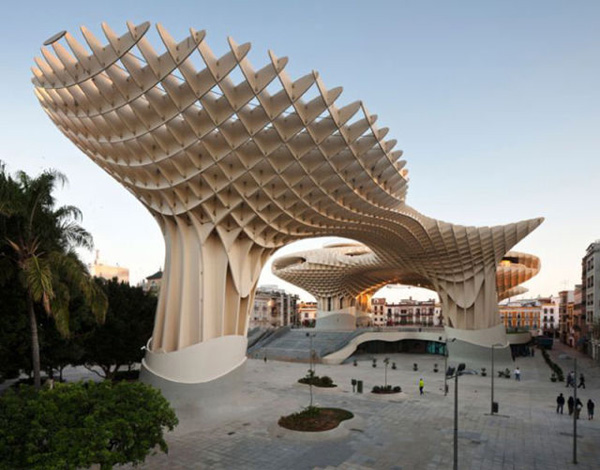The city scrapped its original plans to build a parking garage where the graceful 90-foot honeycomb now stands when Roman ruins were discovered beneath the site. Instead, they hired German architecture firm J. Mayer H. to design a project that would revitalize the city’s Plaza de la Encarnacion in a way that better reflected Seville’s rich cultural history. Beneath the Parasol’s wooden arches, people entertain themselves in bars and restaurants, a farmers’ market, pedestrian walkways with excellent views, and a space for concerts and other public events. Virtually the whole space is open to Seville’s mild Mediterranean climate. The remains of that Roman city still lie under the building, with mosaics and other relics found during construction preserved in an archaeological museum.




No comments:
Post a Comment